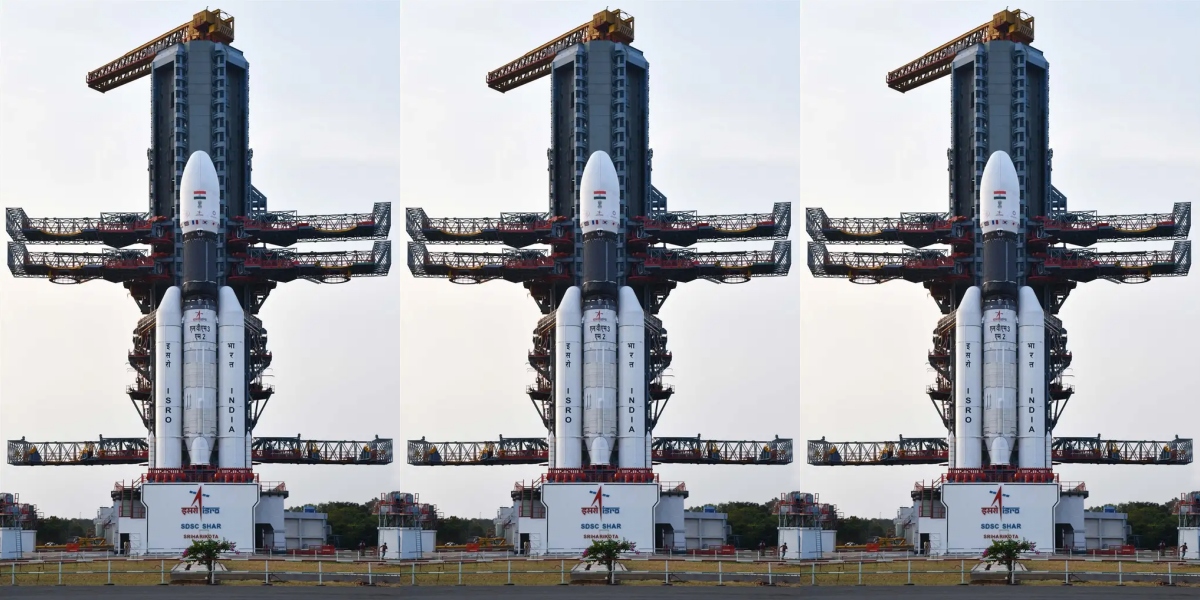In LVM3-M2's First Commercial Mission, ISRO Places 36 Satellites Into Orbit
New Delhi: The Indian Space Research Organisation (ISRO) completed the LVM3-M2's first commercial mission successfully on Sunday, placing 36 broadband communication satellites of a UK-based customer into the intended orbits.
The space agency's heaviest rocket LVM3-M2 – which was earlier known as GSLV-Mk III – completed the mission, which was described as historic.
The satellites that were placed in orbit belonged to OneWeb Ltd, the UK-based customer of NewSpace India Ltd (NSIL), ISRO's commercial arm. The satellites are part of a global communication network that is powered from space, enabling internet connectivity for governments and businesses. Bharti Enterprises – the parent company of Bharti Airtel – is one of the major investors in OneWeb.
With Sunday's success, ISRO put behind the anomaly experienced in its August 7 Small Satellite Launch Vehicle (SSLV) mission, which had then made two satellites unusable.
Early on Sunday, a beaming ISRO chairman S. Somanath said that Deepavali had started early for the scientists at the space agency.
"LVM3 M2/OneWeb India-1 mission is completed successfully. All the 36 satellites have been placed into intended orbits. @NSIL_India @OneWeb," ISRO said in a tweet, minutes after Somanath announced that 16 satellites have been placed in the desired orbits while the rest would take some more time.
All 36 satellites were injected into the orbits around 75 minutes after the rocket blasted off from the spaceport in Sriharikota.
Addressing the gathering at the Mission Control Centre, Somanath said the festival celebrations started at Satish Dhawan Space Centre as LVM3 and its very first commercial mission have accomplished the orbit very accurately.
"Now the rocket has entered into the orbit, 16 satellites out of the 36 satellites have been already injected. I wanted to tell you that this is a slow process of separating the satellites. The data of the separation of the remaining 20 satellites will come little later and mission operations of observing this separation is continuing," he said earlier. ISRO later confirmed the desired objective of the mission has been met.
Former ISRO chiefs K. Sivan and A.S. Kiran Kumar and Bharti Enterprises founder-chairman Sunil Mittal among others witnessed the launch from the Mission Control Centre.
Terming the mission as 'historic', Somanath, also the secretary of the Department of Space, credited Prime Minister Narendra Modi's support for the mission's success.
"Congratulations to the entire launch vehicle team for grabbing the opportunity and making it ready today for the historic mission. I also want to thank the OneWeb team for having confidence in us to host the LVM3...we are very hopeful that the next mission of LVM3 will do the same to place the remaining 36 satellites it has been contracted by NSIL", he said.
NSIL chairman and managing director D. Radhakrishnan, complementing the ISRO team for a 'commendable' mission of LVM3 said, "The three major stakeholders to this particular mission the NSIL, ISRO and OneWeb India, have shown the entire world how to contract and execute the mission in less than 3-4 months."
Earlier, at the end of the 24-hour countdown, the 43.5-metre tall rocket soared majestically in a prefixed time at 12:07 am on Sunday from the second launch pad at the Satish Dhawan Space Centre here.
The vehicle is also dubbed as one of the heaviest for its ability to carry satellites up to 8,000 kg.
The entire mission to place 36 satellites took around 75 minutes from the lift-off as it required scientists to turn off the engine to place the satellites into their respective orbits.
Sunday's mission marks several key milestones as the LVM3-M2 mission is the maiden dedicated commercial mission for the launch vehicle.

ISRO's LVM3-M2 gears up for its OneWeb mission. Photo: ISRO
According to ISRO, the vehicle carried the heaviest payload with 36 satellites of OneWeb, becoming the first Indian rocket with a payload of 5,796 kg.
Mission director Thaddeus Baskar said the ISRO chairman had asked his team to execute the mission in within three months.
"Once the requirement was defined, the entire team ISRO rose to the occasion, worked with full vigour. During the entire schedule, there was no room for sleep and everything has to be done right the first time itself," he said.
The mission is also the first launch in which the LVM3-M2 placed the satellites in the Low Earth Orbit (LEO), which is up to 1,200 km above the Earth. Its previous missions placed satellites in the Geosynchronous Transfer Orbit (GTO).
ISRO scientists had renamed the launch vehicle LVM3-M2 from GSLV-Mk III as the rocket is capable of launching 4,000 kilograms class of satellites into GTO and 8,000 kg of payloads into LEO.
The LVM3-M2 mission would give a fillip to the space agency with the new launch vehicle set to place satellites into the low earth orbit, along with ISRO's trusted workhorse Polar Satellite Launch Vehicle (PSLV).
The rocket is a three-stage launch vehicle consisting of two solid propellant S200 strap-ons on its sides and core stage comprising L110 liquid stage and C25 cryogenic stage.
OneWeb is implementing a constellation of 648 satellites in the Low Earth Orbit. While 36 satellites were launched on Sunday, another batch of satellites was expected to be placed in orbit by early 2023, ISRO said.
This article went live on October twenty-third, two thousand twenty two, at twelve minutes past twelve at noon.The Wire is now on WhatsApp. Follow our channel for sharp analysis and opinions on the latest developments.




